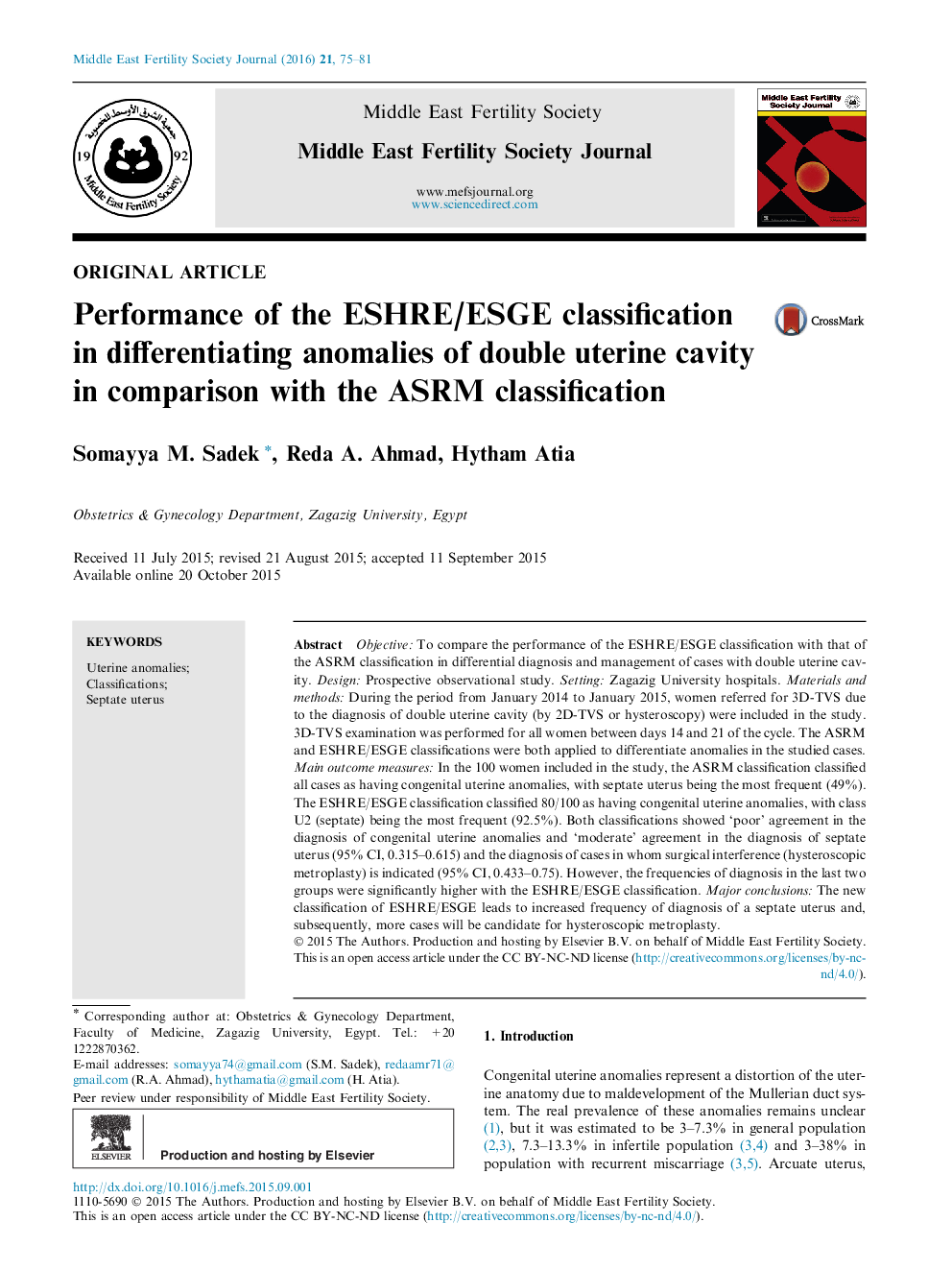| Article ID | Journal | Published Year | Pages | File Type |
|---|---|---|---|---|
| 3966051 | Middle East Fertility Society Journal | 2016 | 7 Pages |
Objective: To compare the performance of the ESHRE/ESGE classification with that of the ASRM classification in differential diagnosis and management of cases with double uterine cavity. Design: Prospective observational study. Setting: Zagazig University hospitals. Materials and methods: During the period from January 2014 to January 2015, women referred for 3D-TVS due to the diagnosis of double uterine cavity (by 2D-TVS or hysteroscopy) were included in the study. 3D-TVS examination was performed for all women between days 14 and 21 of the cycle. The ASRM and ESHRE/ESGE classifications were both applied to differentiate anomalies in the studied cases. Main outcome measures: In the 100 women included in the study, the ASRM classification classified all cases as having congenital uterine anomalies, with septate uterus being the most frequent (49%). The ESHRE/ESGE classification classified 80/100 as having congenital uterine anomalies, with class U2 (septate) being the most frequent (92.5%). Both classifications showed ‘poor’ agreement in the diagnosis of congenital uterine anomalies and ‘moderate’ agreement in the diagnosis of septate uterus (95% CI, 0.315–0.615) and the diagnosis of cases in whom surgical interference (hysteroscopic metroplasty) is indicated (95% CI, 0.433–0.75). However, the frequencies of diagnosis in the last two groups were significantly higher with the ESHRE/ESGE classification. Major conclusions: The new classification of ESHRE/ESGE leads to increased frequency of diagnosis of a septate uterus and, subsequently, more cases will be candidate for hysteroscopic metroplasty.
